Books by Sven Ahrens
Catalogue of the ancient sculpture of the national Musuem in Oslo: Greek and Roman Sculpture, Gre... more Catalogue of the ancient sculpture of the national Musuem in Oslo: Greek and Roman Sculpture, Greek and Roman portraits, votive and grave reliefs, Egyptian and Roman sarcophagi and cinerary urns, Campana reliefs, architectural decoration. This is the first catalogue which presents the complete collection of sculpture in pictures. With summarized entries and introductions in English.
Edited books by Sven Ahrens
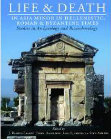
Life and Death in Asia Minor combines contributions in both archaeology and bioarchaeology in Asi... more Life and Death in Asia Minor combines contributions in both archaeology and bioarchaeology in Asia Minor in the period ca. 200 BC – AD 1300 for the first time. The archaeology topics are wide-ranging including death and territory, death and landscape perception, death and urban transformations from pagan to Christian topography, changing tomb typologies, funerary costs, family organization, funerary rights, rituals and practices among pagans, Jews, and Christians, inhumation and Early Byzantine cremations and use and reuse of tombs. The bioarchaeology chapters use DNA, isotope and osteological analyses to discuss, both among children and adults, questions such as demography and death rates, pathology and nutrition, body actions, genetics, osteobiography, and mobility patterns and diet. The areas covered in Asia Minor include the sites of Hierapolis, Laodikeia, Aphrodisias, Tlos, Ephesos, Priene, Kyme, Pergamon, Amorion, Gordion, Boğazkale, and Arslantepe. The theoretical and methodological approaches used make it highly relevant for people working in other geographical areas and time periods. Many of the articles could be used as case studies in teaching at schools and universities. An important objective of the publication has been to see how the different types of results emerging from archaeological and natural science studies respectively could be integrated with each other and pose new questions on ancient societies, which were far more complex than historical and social studies of the past often manage to transmit.
Table of Contents
Acknowledgements vii
Authors and Addresses ix
Introduction. Dead bodies – Live data: Some reflections from the sideline xiii
J. Rasmus Brandt
PART I: From life to death. Death and the social and funerary setting
1. The Sanctuary of St Philip in Hierapolis and the tombs of saints in Anatolian cities
. Francesco D’Andria
2. Necropoleis from the territory of Hierapolis in Phrygia: New data from archaeological surveys. Giuseppe Scardozzi
3. The South-East Necropolis of Hierapolis of Phrygia: Planning, typologies and construction techniques. Donatella Ronchetta
4. Tomb 163d in the North Necropolis of Hierapolis of Phrygia. An insight into the funerary gestures and practices of the Jewish Diaspora in Asia Minor in Late Antiquity and the Proto-Byzantine period. Caroline Laforest, Dominique Castex, and Frédérique Blaizot
5. Tomb ownership in Lycia; site selection and burial rights with selected rock tombs and epigraphical material from Tlos. Gül Işın and Ertan Yıldız
6. The sarcophagus of Alexandros, son of Philippos. An important discovery in the Lycian city of Tlos. Taner Korkut and Çilem Uygun
7. ‘Till death do them part’: Reconstructing Graeco-Roman family life from funerary inscriptions of Aphrodisias. Esen Öğüş
8. Social status and tomb monuments in Hierapolis and Roman Asia Minor. Sven Ahrens
9. New evidence for non-elite burial patterns in central Turkey. Andrew L. Goldman
10. Reflections on the mortuary landscape of Ephesus. The archaeology of death in a Roman Metropolis. Martin Steskal
11. Christian burials in a pagan context at Amorium. Christopher S. Lightfoot
12. Romans, Christians, and pilgrims at Hierapolis in Phrygia. A funerary journey of mental changes. Camilla Cecilie Wenn, Sven Ahrens, and J. Rasmus Brandt
PART II: From death to life. Man and ancient life conditions
13. Analysis of DNA in human skeletal material from Hierapolis. Gro Bjørnstad and Erika Hagelberg
14. Isotopic investigations of human diet and mobility at the site of Hierapolis, Turkey. Megan Wong, Elise Naumann, Klervia Jaouen, and Michael Richards
15. Diet in Roman Pergamon using stable isotope (C, N, S), osteoarchaeological and historical data – preliminary results. Johanna Propstmeier, Olaf Nehlich, Michael Richards, Gisela Grupe, Gundula H. Müldner, and Wolf-Rüdiger Teegen
16. Pergamon – Kyme – Priene: Health and disease from the Roman to the Late Byzantine period in different locations of Asia Minor. Wolf-Rüdiger Teegen
17. Toothache, back pain, and fatal injuries – what skeletons tell about life and death at Roman and Byzantine Hierapolis. Henrike Kiesewetter
18. Health and disease of infants and children in Byzantine Anatolia between AD 600 and 1350. Michael Schultz and Tyede H. Schmidt-Schultz
19. Infant and child skeletons from the Lower City Church at Byzantine Amorium. F. Arzu Demirel
20. The wrestler from Ephesus: Osteobiography of a man from the Roman period based on his anthropological and palaeopathological record. Jan Nováček, Kristina Scheelen, and Michael Schultz
General Index
Papers by Sven Ahrens
ΝΑΞΟΣ. Αρχαία, Βυζαντινή, Λατινοκρατούμενη,Νεότερη, Σύγχρονη. Πρακτικά του ΣΤ΄ Επιστημονικού Συνεδρίου «Η Νάξος δια μέσου των αιώνων» (Δαμαριώνας Νάξου, 30 Αυγούστου-2 Σεπτεμβρίου 2018) ISBN: 978-618-85796-0-6, 2021
Journal of Archaeological Science: Reports , 2018
https://www.sciencedirect.com/science/article/pii/S2352409X17304029

Ismaelli, T., Scardozzi, G. (eds.), Ancient quarries and building sites in Asia Minor. Research on Hierapolis in Phrygia and other cities in south-western Anatolia: archaeology, archaeometry, conservation, Bari: Edipuglia, 259-276, 2016
Recent investigations in the North-East Necropolis and in the St Philip church at Hierapolis brou... more Recent investigations in the North-East Necropolis and in the St Philip church at Hierapolis brought to light numerous
fragments of marble sarcophagi. the paper presents the results of the archaeological examinations carried out on these sarcophagi,
which are discussed in integration with petrographic, isotopic and cathodoluminescence data. Imported sarcophagi from Dokimeion
and others made of local marbles (especially from thiounta and Marmar tepe) are attested, suggesting a new scenario for the production
activities and the presence of travelling craftsmen in the Lykos Valley. Also the reuse of the roman Imperial sarcophagi inside
the byzantine building site of the st Philip church is discussed.
Sommeren 2016 var det regulerte Nøklevann kraftig neddemmet som et
ledd i reparasjonsarbeider på ... more Sommeren 2016 var det regulerte Nøklevann kraftig neddemmet som et
ledd i reparasjonsarbeider på demningen ved Rustadsaga, en av hovedinnfartsårene til Østmarka. I den anledning ble det fra turgåere meldt inn funn av trekonstruksjoner i strandkanten. På bakgrunn av funnmeldingen fikk NMM i samarbeid med Byantikvaren i Oslo muligheten til å gjøre en rask overflateregistrering av de neddemmede breddene av vannet den 19. mai 2016. I løpet av dagen ble hele strandsonen rundt Nøklevann visuelt undersøkt, og det ble påvist tre skipsfunn, en rekke kattiser , steinrøyser, klopper og en struktur som kan være del av et veianlegg.
Near Surface Geophysics March 2017
Asgeir Kydland Lysdahl, Sara Bazin, Craig Christensen, Sven Ahrens, Thomas Günther, Andreas A. Pf... more Asgeir Kydland Lysdahl, Sara Bazin, Craig Christensen, Sven Ahrens, Thomas Günther, Andreas A. Pfaffhuber
Conference: Near Surface Geoscience 2014 - 20th European Meeting of Environmental and Engineering Geophysics, 700-704, 2014
Four ERT profiles have been acquired in the Bjørvika area in Oslo in order to reveal resistivity ... more Four ERT profiles have been acquired in the Bjørvika area in Oslo in order to reveal resistivity anomalies that could correspond to archaeologically interesting timber objects. The data has been processed and analyzed with three different inversion softwares, and both two- and three-dimensional resistivity models have been generated. The different 2D profiles as well as the 3D models were in good agreement, and anomalies located by the ERT survey were excavated and proven to correspond to buried concrete structures. The pinpointing capabilities, correctness and resolution of the different inversion methods have been elucidated.
G. Koch (ed.), Akten des Symposiums Römische Sarkophage, Marburg, 2. – 8. Juli 2006, Marburger Beiträge zur Archäologie (MarBAr), Band 3 (Marburg 2016), 1-11.
VI Gefördert durch die Byzantion-Stiftung Marburg Sigel der Marburger Beiträge zur Archäologie: M... more VI Gefördert durch die Byzantion-Stiftung Marburg Sigel der Marburger Beiträge zur Archäologie: MarBAr Titelbild Malibu, The J. Paul Getty Museum, Inv. 95.AA.80: Achilles Sarcophagus Bibliografische Information der Deutschen Nationalbibliothek Die Deutsche Nationalbibliothek verzeichnet diese Publikation in der Deutschen Nationalbibliografie; detaillierte bibliografische Daten sind im Internet über http://dnb.d-nb.de abrufbar. Bibliographic information published by Deutsche Nationalbibliothek The Deutsche Nationalbibliothek lists this publication in the Deutsche Nationalbibliografie; detailed bibliografic data are available on the internet at http://dnb.d-nb.de.
Life and Death in Ancient Society. Asia Minor in the Hellenistic, Roman, and Byzantine Times, International Conference Fredrikstad 2013, Oxbow Books
Hardback Edition: ISBN 978-1-78570-359-1 Digital Edition: ISBN 978-1-78570-360-7 (epub) Hardback ... more Hardback Edition: ISBN 978-1-78570-359-1 Digital Edition: ISBN 978-1-78570-360-7 (epub) Hardback Edition: ISBN 978-1-78570-359-1 Digital Edition: ISBN 978-1-78570-360-7 (epub)
Hardback Edition: ISBN 978-1-78570-359-1 Digital Edition: ISBN 978-1-78570-360-7 (epub) Hardback ... more Hardback Edition: ISBN 978-1-78570-359-1 Digital Edition: ISBN 978-1-78570-360-7 (epub) Hardback Edition: ISBN 978-1-78570-359-1 Digital Edition: ISBN 978-1-78570-360-7 (epub)
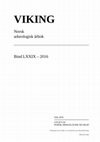
Siden 1957 har italienske forskere drevet arkeologiske undersøkelser i den antikke byen Hierapoli... more Siden 1957 har italienske forskere drevet arkeologiske undersøkelser i den antikke byen Hierapolis i Lilleasia (figur 1).1 I 2007 ble norske arkeologer og naturvitere invitert til å undersøke en av byens gravplasser, den såkalte Nordøst-nekropolen. Det norske forskningsprosjektets primære mål var å foreta en full typologisk dokumentasjon av alle synlige graver og sarkofager på denne gravplassen, deres topografiske utbredelse og organisasjon, dernest
å foreta utgravninger av utvalgte gravbygninger og gravområder for å avdekke nekropolens bruksperioder.
Valget falt på en gruppe med tre bygninger og tre sarkofager i nekropolens øverste del; i tillegg ble det foretatt noen spredte stikkgravninger rundt i gravplassområdet. Dette arbeidet dannet grunnlaget for videre studier, der vi i en sosial sammenheng ønsket å undersøke en bybefolkning i detalj over en lengre periode gjennom studier av gravarkitektur og landskapsoppfatning,
organisasjon, familietilhørighet og entreprenørvirksomhet, rituell handling og praksis, genetiske relasjoner og opphav, paleodemografi, helse og sykdommer, dietter og enkeltpersoners bevegelsesmønstre. For å kunne svare på mange av disse spørsmålene ble det også foretatt bioarkeologiske undersøkelser, som C14-dateringer, osteologi og
DNA- og isotopanalyser. Målet med denne artikkelen er å diskutere hva de foreløpige studiene rundt disse spørsmål kan fortelle oss om liv og død i Hierapolis, sett i en videre lokal og regional kulturkontekst. Gravplassens historie strekker seg fra 1./2. årh. e.Kr. til ca. år 1300,
og fanger opp religionsskiftet i senantikken. Der er derfor naturlig, etter en historisk innledning, å se på hvorledes døden (gjennom gravenes lokalisering, form og innhold) ble behandlet før og etter religionsskiftet, deretter hva skjelettene kan fortelle om livskvalitet og endringer i den
Larsen, N. & Pilati, M. (eds.) 2016. Why 3D? Proceedings from the Why3D? seminary, Moesgaard Museum the 21st of August 2014, Øhavsmuseet Faaborgs Forlag
D'Andria, F. et al, Hierapolis Di Frigia VIII 1: Le Attivita delle Campagne di Scavo Restauro 2007-2011 , 2016
D'Andria, F. et al, Hierapolis Di Frigia VIII 1: Le Attivita delle Campagne di Scavo Restauro 2007-2011 , 2016
Acta Archaeologica
The attached file is only a proof. Page numbers are not correct, errors in the text.

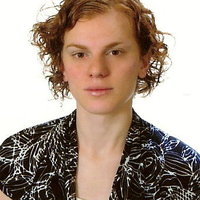
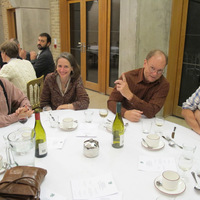
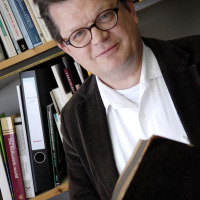
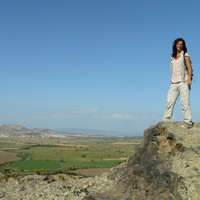
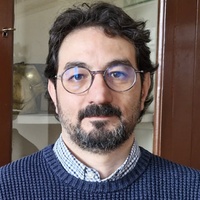


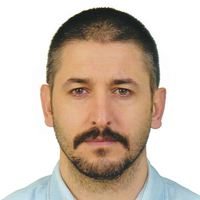
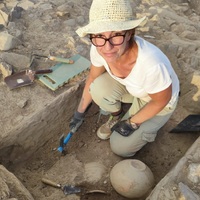

Uploads
Books by Sven Ahrens
Edited books by Sven Ahrens
Table of Contents
Acknowledgements vii
Authors and Addresses ix
Introduction. Dead bodies – Live data: Some reflections from the sideline xiii
J. Rasmus Brandt
PART I: From life to death. Death and the social and funerary setting
1. The Sanctuary of St Philip in Hierapolis and the tombs of saints in Anatolian cities
. Francesco D’Andria
2. Necropoleis from the territory of Hierapolis in Phrygia: New data from archaeological surveys. Giuseppe Scardozzi
3. The South-East Necropolis of Hierapolis of Phrygia: Planning, typologies and construction techniques. Donatella Ronchetta
4. Tomb 163d in the North Necropolis of Hierapolis of Phrygia. An insight into the funerary gestures and practices of the Jewish Diaspora in Asia Minor in Late Antiquity and the Proto-Byzantine period. Caroline Laforest, Dominique Castex, and Frédérique Blaizot
5. Tomb ownership in Lycia; site selection and burial rights with selected rock tombs and epigraphical material from Tlos. Gül Işın and Ertan Yıldız
6. The sarcophagus of Alexandros, son of Philippos. An important discovery in the Lycian city of Tlos. Taner Korkut and Çilem Uygun
7. ‘Till death do them part’: Reconstructing Graeco-Roman family life from funerary inscriptions of Aphrodisias. Esen Öğüş
8. Social status and tomb monuments in Hierapolis and Roman Asia Minor. Sven Ahrens
9. New evidence for non-elite burial patterns in central Turkey. Andrew L. Goldman
10. Reflections on the mortuary landscape of Ephesus. The archaeology of death in a Roman Metropolis. Martin Steskal
11. Christian burials in a pagan context at Amorium. Christopher S. Lightfoot
12. Romans, Christians, and pilgrims at Hierapolis in Phrygia. A funerary journey of mental changes. Camilla Cecilie Wenn, Sven Ahrens, and J. Rasmus Brandt
PART II: From death to life. Man and ancient life conditions
13. Analysis of DNA in human skeletal material from Hierapolis. Gro Bjørnstad and Erika Hagelberg
14. Isotopic investigations of human diet and mobility at the site of Hierapolis, Turkey. Megan Wong, Elise Naumann, Klervia Jaouen, and Michael Richards
15. Diet in Roman Pergamon using stable isotope (C, N, S), osteoarchaeological and historical data – preliminary results. Johanna Propstmeier, Olaf Nehlich, Michael Richards, Gisela Grupe, Gundula H. Müldner, and Wolf-Rüdiger Teegen
16. Pergamon – Kyme – Priene: Health and disease from the Roman to the Late Byzantine period in different locations of Asia Minor. Wolf-Rüdiger Teegen
17. Toothache, back pain, and fatal injuries – what skeletons tell about life and death at Roman and Byzantine Hierapolis. Henrike Kiesewetter
18. Health and disease of infants and children in Byzantine Anatolia between AD 600 and 1350. Michael Schultz and Tyede H. Schmidt-Schultz
19. Infant and child skeletons from the Lower City Church at Byzantine Amorium. F. Arzu Demirel
20. The wrestler from Ephesus: Osteobiography of a man from the Roman period based on his anthropological and palaeopathological record. Jan Nováček, Kristina Scheelen, and Michael Schultz
General Index
Papers by Sven Ahrens
fragments of marble sarcophagi. the paper presents the results of the archaeological examinations carried out on these sarcophagi,
which are discussed in integration with petrographic, isotopic and cathodoluminescence data. Imported sarcophagi from Dokimeion
and others made of local marbles (especially from thiounta and Marmar tepe) are attested, suggesting a new scenario for the production
activities and the presence of travelling craftsmen in the Lykos Valley. Also the reuse of the roman Imperial sarcophagi inside
the byzantine building site of the st Philip church is discussed.
ledd i reparasjonsarbeider på demningen ved Rustadsaga, en av hovedinnfartsårene til Østmarka. I den anledning ble det fra turgåere meldt inn funn av trekonstruksjoner i strandkanten. På bakgrunn av funnmeldingen fikk NMM i samarbeid med Byantikvaren i Oslo muligheten til å gjøre en rask overflateregistrering av de neddemmede breddene av vannet den 19. mai 2016. I løpet av dagen ble hele strandsonen rundt Nøklevann visuelt undersøkt, og det ble påvist tre skipsfunn, en rekke kattiser , steinrøyser, klopper og en struktur som kan være del av et veianlegg.
å foreta utgravninger av utvalgte gravbygninger og gravområder for å avdekke nekropolens bruksperioder.
Valget falt på en gruppe med tre bygninger og tre sarkofager i nekropolens øverste del; i tillegg ble det foretatt noen spredte stikkgravninger rundt i gravplassområdet. Dette arbeidet dannet grunnlaget for videre studier, der vi i en sosial sammenheng ønsket å undersøke en bybefolkning i detalj over en lengre periode gjennom studier av gravarkitektur og landskapsoppfatning,
organisasjon, familietilhørighet og entreprenørvirksomhet, rituell handling og praksis, genetiske relasjoner og opphav, paleodemografi, helse og sykdommer, dietter og enkeltpersoners bevegelsesmønstre. For å kunne svare på mange av disse spørsmålene ble det også foretatt bioarkeologiske undersøkelser, som C14-dateringer, osteologi og
DNA- og isotopanalyser. Målet med denne artikkelen er å diskutere hva de foreløpige studiene rundt disse spørsmål kan fortelle oss om liv og død i Hierapolis, sett i en videre lokal og regional kulturkontekst. Gravplassens historie strekker seg fra 1./2. årh. e.Kr. til ca. år 1300,
og fanger opp religionsskiftet i senantikken. Der er derfor naturlig, etter en historisk innledning, å se på hvorledes døden (gjennom gravenes lokalisering, form og innhold) ble behandlet før og etter religionsskiftet, deretter hva skjelettene kan fortelle om livskvalitet og endringer i den
Table of Contents
Acknowledgements vii
Authors and Addresses ix
Introduction. Dead bodies – Live data: Some reflections from the sideline xiii
J. Rasmus Brandt
PART I: From life to death. Death and the social and funerary setting
1. The Sanctuary of St Philip in Hierapolis and the tombs of saints in Anatolian cities
. Francesco D’Andria
2. Necropoleis from the territory of Hierapolis in Phrygia: New data from archaeological surveys. Giuseppe Scardozzi
3. The South-East Necropolis of Hierapolis of Phrygia: Planning, typologies and construction techniques. Donatella Ronchetta
4. Tomb 163d in the North Necropolis of Hierapolis of Phrygia. An insight into the funerary gestures and practices of the Jewish Diaspora in Asia Minor in Late Antiquity and the Proto-Byzantine period. Caroline Laforest, Dominique Castex, and Frédérique Blaizot
5. Tomb ownership in Lycia; site selection and burial rights with selected rock tombs and epigraphical material from Tlos. Gül Işın and Ertan Yıldız
6. The sarcophagus of Alexandros, son of Philippos. An important discovery in the Lycian city of Tlos. Taner Korkut and Çilem Uygun
7. ‘Till death do them part’: Reconstructing Graeco-Roman family life from funerary inscriptions of Aphrodisias. Esen Öğüş
8. Social status and tomb monuments in Hierapolis and Roman Asia Minor. Sven Ahrens
9. New evidence for non-elite burial patterns in central Turkey. Andrew L. Goldman
10. Reflections on the mortuary landscape of Ephesus. The archaeology of death in a Roman Metropolis. Martin Steskal
11. Christian burials in a pagan context at Amorium. Christopher S. Lightfoot
12. Romans, Christians, and pilgrims at Hierapolis in Phrygia. A funerary journey of mental changes. Camilla Cecilie Wenn, Sven Ahrens, and J. Rasmus Brandt
PART II: From death to life. Man and ancient life conditions
13. Analysis of DNA in human skeletal material from Hierapolis. Gro Bjørnstad and Erika Hagelberg
14. Isotopic investigations of human diet and mobility at the site of Hierapolis, Turkey. Megan Wong, Elise Naumann, Klervia Jaouen, and Michael Richards
15. Diet in Roman Pergamon using stable isotope (C, N, S), osteoarchaeological and historical data – preliminary results. Johanna Propstmeier, Olaf Nehlich, Michael Richards, Gisela Grupe, Gundula H. Müldner, and Wolf-Rüdiger Teegen
16. Pergamon – Kyme – Priene: Health and disease from the Roman to the Late Byzantine period in different locations of Asia Minor. Wolf-Rüdiger Teegen
17. Toothache, back pain, and fatal injuries – what skeletons tell about life and death at Roman and Byzantine Hierapolis. Henrike Kiesewetter
18. Health and disease of infants and children in Byzantine Anatolia between AD 600 and 1350. Michael Schultz and Tyede H. Schmidt-Schultz
19. Infant and child skeletons from the Lower City Church at Byzantine Amorium. F. Arzu Demirel
20. The wrestler from Ephesus: Osteobiography of a man from the Roman period based on his anthropological and palaeopathological record. Jan Nováček, Kristina Scheelen, and Michael Schultz
General Index
fragments of marble sarcophagi. the paper presents the results of the archaeological examinations carried out on these sarcophagi,
which are discussed in integration with petrographic, isotopic and cathodoluminescence data. Imported sarcophagi from Dokimeion
and others made of local marbles (especially from thiounta and Marmar tepe) are attested, suggesting a new scenario for the production
activities and the presence of travelling craftsmen in the Lykos Valley. Also the reuse of the roman Imperial sarcophagi inside
the byzantine building site of the st Philip church is discussed.
ledd i reparasjonsarbeider på demningen ved Rustadsaga, en av hovedinnfartsårene til Østmarka. I den anledning ble det fra turgåere meldt inn funn av trekonstruksjoner i strandkanten. På bakgrunn av funnmeldingen fikk NMM i samarbeid med Byantikvaren i Oslo muligheten til å gjøre en rask overflateregistrering av de neddemmede breddene av vannet den 19. mai 2016. I løpet av dagen ble hele strandsonen rundt Nøklevann visuelt undersøkt, og det ble påvist tre skipsfunn, en rekke kattiser , steinrøyser, klopper og en struktur som kan være del av et veianlegg.
å foreta utgravninger av utvalgte gravbygninger og gravområder for å avdekke nekropolens bruksperioder.
Valget falt på en gruppe med tre bygninger og tre sarkofager i nekropolens øverste del; i tillegg ble det foretatt noen spredte stikkgravninger rundt i gravplassområdet. Dette arbeidet dannet grunnlaget for videre studier, der vi i en sosial sammenheng ønsket å undersøke en bybefolkning i detalj over en lengre periode gjennom studier av gravarkitektur og landskapsoppfatning,
organisasjon, familietilhørighet og entreprenørvirksomhet, rituell handling og praksis, genetiske relasjoner og opphav, paleodemografi, helse og sykdommer, dietter og enkeltpersoners bevegelsesmønstre. For å kunne svare på mange av disse spørsmålene ble det også foretatt bioarkeologiske undersøkelser, som C14-dateringer, osteologi og
DNA- og isotopanalyser. Målet med denne artikkelen er å diskutere hva de foreløpige studiene rundt disse spørsmål kan fortelle oss om liv og død i Hierapolis, sett i en videre lokal og regional kulturkontekst. Gravplassens historie strekker seg fra 1./2. årh. e.Kr. til ca. år 1300,
og fanger opp religionsskiftet i senantikken. Der er derfor naturlig, etter en historisk innledning, å se på hvorledes døden (gjennom gravenes lokalisering, form og innhold) ble behandlet før og etter religionsskiftet, deretter hva skjelettene kan fortelle om livskvalitet og endringer i den